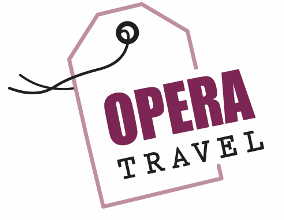Destinations
Discover your next great adventure

Cuba – The Heartbeat of the Caribbean with
Rich Culture and Vibrant History
General Information
- Capital: Havana
- Area: 109,884 km²
- Population: Approx. 11 million
- Currency: Cuban Peso (CUP)
- Languages: Spanish (English is widely
spoken in tourist areas)
Visa Requirements
Visitors to Cuba must:
- Hold a passport valid for at least six
months from the date of entry.
- Have an onward or return ticket.
- Obtain a Tourist Card (also known as
a visa) before arrival, which is typically valid for 30 days and can be
extended for an additional 30 days.
- Visa-free access is available for
certain countries (check for updates).
- Visitors from the US should check the
specific travel regulations, as there are certain restrictions for American
citizens.
Best
Time to Visit
- Winter
(December – April): This is the dry
season, offering sunny weather and ideal conditions for exploring the island's
beaches and historical landmarks.
- Spring (May – June): A great time to visit for fewer crowds and
mild weather.
Main Attractions
- Havana – The lively capital, known for
its vibrant culture, historic Old Town, and classic cars.
- Varadero – A resort town offering
pristine beaches and luxury hotels.
- Viñales Valley – A UNESCO World Heritage
site featuring tobacco farms, dramatic limestone landscapes, and traditional
Cuban life.
- Trinidad – A colonial town with
cobblestone streets, colorful buildings, and a charming atmosphere.
- Cienfuegos – A beautiful coastal city
with French-influenced architecture.
- Santiago de Cuba – The heart of
Afro-Cuban culture, known for its lively music scene and historical
significance.
- Cuba's Beaches – Cuba boasts some of the
most stunning beaches in the Caribbean, including Playa Paraiso, Playa Sirena,
and Playa Ancón.
Activities & Outdoor Adventures
- Beach Relaxation – Cuba’s beaches are
perfect for swimming, sunbathing, and water sports like kayaking and
snorkeling.
- Classic Car Tours – Take a ride in one of
Havana's famous vintage cars to see the city's historic sites.
- Cultural Experiences – Enjoy live music,
salsa dancing, and a rich array of cultural events throughout the country.
- Hiking & Nature – Explore the
stunning Viñales Valley or hike in the Topes de Collantes nature reserve.
- Scuba Diving & Snorkeling – Discover
Cuba’s vibrant marine life and coral reefs off the coasts of Varadero and the
Jardines de la Reina.
- Cuban Cigars – Visit tobacco plantations
in the Viñales Valley to learn about and experience the making of the
world-famous Cuban cigars.
Traditional Food & Drinks
Local Dishes:
- Arroz con Pollo – A flavorful rice and
chicken dish with vegetables and spices.
- Tostones –Fried green plantains, often
served as a side dish or snack.
- Moros y Cristianos – A classic Cuban dish
of black beans and rice, often served with pork or chicken.
- Lechón – Slow-roasted whole pig, often
served during celebrations and family gatherings.
Desserts:
- Flan –A rich caramel custard
dessert.
- Tarta de Guayaba –A guava pastry, often
served with cream cheese.
- Coconut Flan –A variation of the classic
flan made with coconut milk for a tropical twist.
Drinks:
- Cuban Mojito – A refreshing cocktail made
with rum, mint, lime, sugar, and soda water.
- Cuba Libre –A cocktail made with rum,
cola, and lime.
- Daiquiri – A classic Cuban cocktail made
with rum, lime juice, and sugar.
- Cuban Coffee – Strong, espresso-style
coffee served black or with sugar.
Travel Tips for Cuba
1. Currency & Payments: Cuba has two
currencies: the Cuban Peso (CUP) for locals and the Convertible Peso (CUC) for
tourists. Make sure to carry cash as credit cards are not widely accepted,
especially outside of major tourist areas.
2. Best Time to Visit: The dry season
(December – April) offers pleasant weather and is the most popular time for
visitors.
3. Public Transport: Public transport is
limited. Taxis, buses, and private transport options are available, and the
iconic classic cars are a fun way to explore.
4. Safety: Cuba is a relatively safe
destination, but be cautious of pickpockets in crowded areas.
5. Local Etiquette: Respect local customs,
especially when visiting religious sites. Cubans are warm and welcoming, so
don’t hesitate to engage in conversation.
6. What to Avoid: Avoid engaging in
political discussions, as the country has strict laws regarding such
topics.
8. Shopping: Look for locally made handicrafts, cigars,
rum, and art as souvenirs.
9. Tipping: Tipping is appreciated, usually around 10-15%
in restaurants.
10. Festivals: Cuba is home to numerous festivals throughout
the year, including the Havana International Jazz Festival, the Santiago de
Cuba Carnival, and the May Day celebrations.
Summary
Cuba is a vibrant destination with a rich culture, beautiful landscapes, and a history like no other. Whether you’re exploring the colorful streets of Havana, lounging on idyllic beaches, or hiking through its lush valleys, Cuba offers an unforgettable experience filled with music, history, and the warmth of its people. It’s a place where the past and present blend harmoniously, making it a must-visit for those seeking both adventure and culture.
